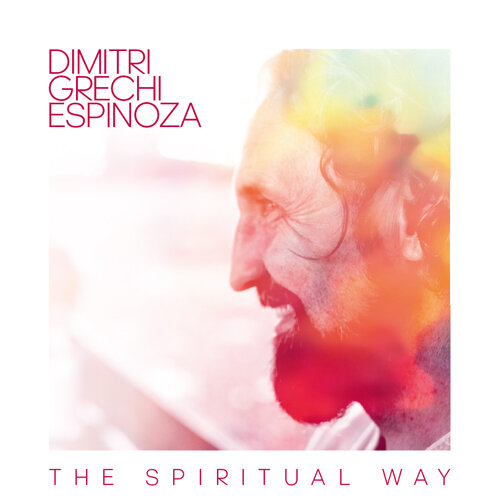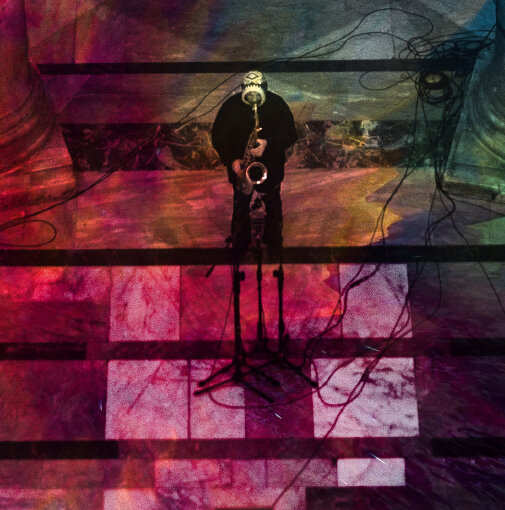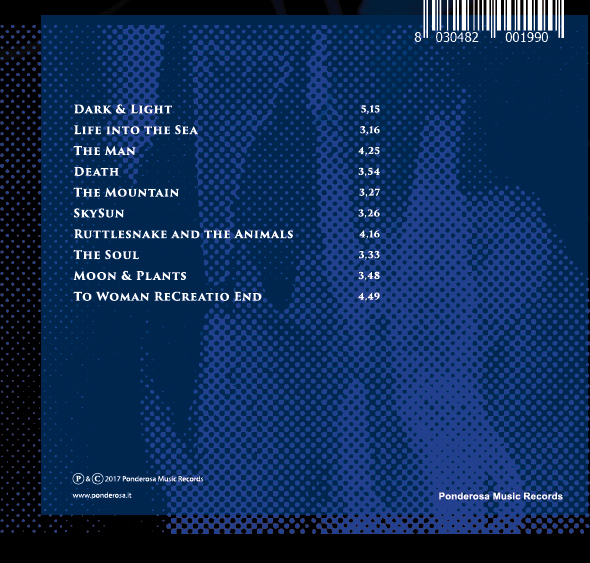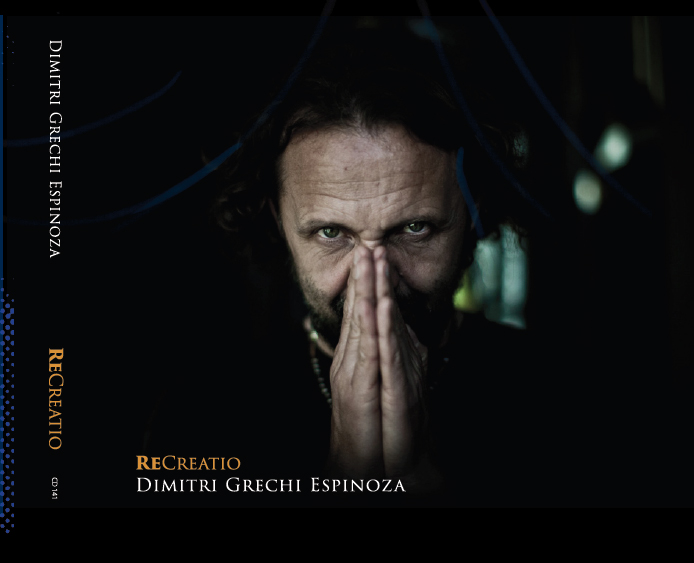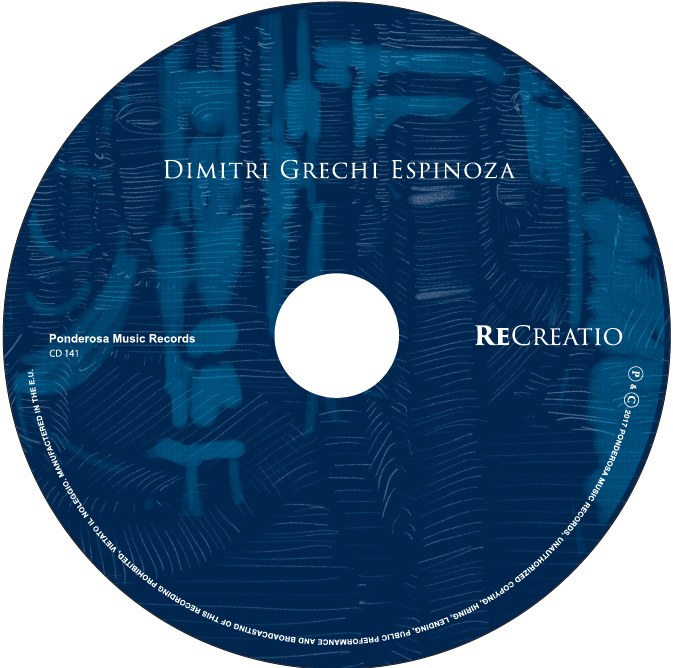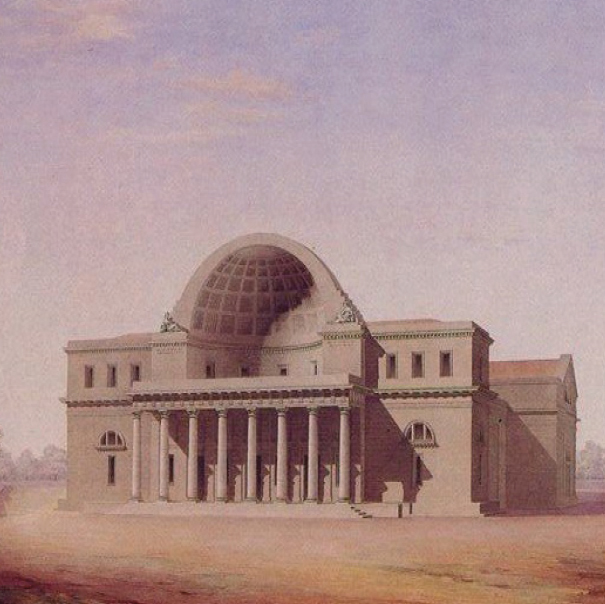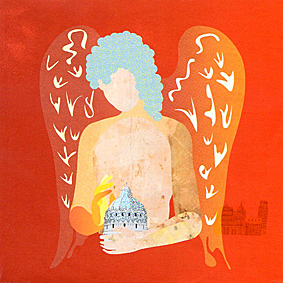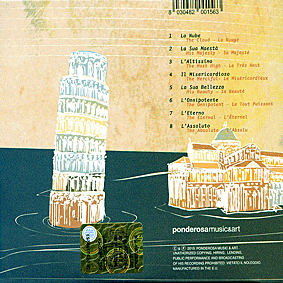







NAïM
LISTEN →
NAïM
LISTEN →
Naïm
نعيم
אושר
Dimitri Espinoza Grechi - tenor sax & digital reverber
Said Tichiti - vocal/gambri/karkaba/bendhir
Aziz Senol Filiz - ney/vocal
My new recording is the result of a residency promoted byToscana Produzione Musica carried out on the island of Capraia
in April 2024. For the first time, my project, "Oreb/The Spiritual Meaning of Sound" has been enriched by the contribution of two friends/musicians: Said Tichiti and Aziz Senol Filiz.
During the days of the residency we shared music, food and thoughts with the small community that was thus created.
This songs are the soul of our meeting.
All rights reserved. Unauthorized reproduction, copying, hiring, public performance and broadcasting prohibited. Made in EU

the healing sax
I have been working for many years on the “Oreb” project for saxophone solo and natural echo thanks to the fundamental knowledge passed on by traditional cultural heritages concerning the spiritual meaning of sound and its proper therapeutic use. The Hindu theory about the dhvani resonance and the primordial essence of sound in its ahata nada (audible) and anahata nada (non-audible) forms is a perfect example of the above-mentioned concept. By means of my fourth recording I am addressing all those who are capable to experience inner resonance through listening and thereby become aware of the sound quality forming the deep essence of every human being.
I have prepared a healing sound path of about 30 minutes, which involves the five senses and the mind, and eventually returns to the heart through sensorial organs. The heart is the core of the human being’s manifold conditions.
Wishing you health and inner peace.
All tracks composed by Dimitri Grechi Espinoza
Produced by Titti Santini
Recorded by Giovanni Ghezzi at
“Chiesa S. Maria Del Soccorso”, Livorno (Italy) on April 29th, 2021
Without overdubs
Mixed and Mastered by Giovanni Ghezzi at “RedRoom Recording Studio”, Vecchiano (PI) Italy
Photo cover by Titti Santini
Photo by: Sara Vannucchi
Artwork by: Andrea Pellegrini
Booking: Ponderosa Music & Art - giuseppe@ponderosa.it - www.ponderosa.it
Publisher: 2 Be Music Srl (P) & © 2023 Ponderosa Music Records
All rights reserved. Unauthorized reproduction, copying, hiring,p ublic performance and broadcasting prohibited. Made in EU

love is a losing game
“Sound is the essence of our world. Two inseparable brothers live inside me, one plays music, the other listen to it” these are the words used by Dimitri Grechi Espinoza to define his latest musical project. “Love is a losing game” wants to be a unique tribute to some of his favorite jazz standards, an accurate research to achieve the absolute purity of that extraordinary melodies. This is a spiritual work that Dimitri plays in solo sax, remixed by Ponderosa Music Records using a musical recording of the performance this artist realized in august 2022 inside the Roman Cistern of the "Enrico Fiumi" archeological excavations of Volterra for the "Volterra XXII Ri/generazione Umana" festival. This place enabled Dimitri to exploit the natural reverb in order to add to this cathartic work a deep emotional and healing component that runs his spiritual and musical vision.
All tracks where played and recorded live in solo saxophone and natural reverberation without compression and overdubs at “Cisterna Romanica del Parco Archeologico Enrico Fiumi” Volterra (Italy) by Dimitri Grechi EspinozaMixed and Mastered by Giovanni Ghezzi at “RedRoom Recording Studio” Vecchiano (PI) ItalyProduced by Titti SantiniPhoto by Stefano TommasiDigital cover adapted by Andrea PellegriniThanks to: L'assessorato alla Cultura del Comune di Volterra e Ass. Cantiere MadausBooking: Ponderosa Music & Art - giuseppe@ponderosa.it - www.ponderosa.it (P) & © 2023 Ponderosa Music Records
All rights reserved. Unauthorized reproduction, copying, hiring, lending, public performance and broadcasting prohibited. Made in EU

THE SPIRITUAL WAY
THE SPIRITUAL WAY Recorded in the Pisa “Baptistery of San Giovanni”
in Piazza dei Miracoli of Pisa on
13th February 2019
THE SPIRITUAL WAY
THE SPIRITUAL WAY Recorded in the Pisa “Baptistery of San Giovanni”
in Piazza dei Miracoli of Pisa on
13th February 2019
THE SPIRITUAL WAY
In this third CD of the OREB project for solo saxophone and natural reverb, I chose to address the topic of spiritual virtues which, in my view, is an important issue in times like these, apparently so lacking in spirituality. Through my music, I have tried to give echo and resonance to a traditional Chinese text that outlines a path of interior ascendance and concisely expresses its key principles.
My thanks to all those who contributed to the realization of the project. My very best wishes to all those who sincerely wish to follow this spiritual path towards a humanity experienced to the fullest.
To develop the natural virtues, a person must first of all work to perfect himself. To perfect himself, first he must learn to control his heartbeat.
To control the heartbeat means to regulate breathing, and to regulate breathing he must concentrate his mind. Concentrating his mind perfects his will, developing knowledge as much as possible. Knowledge is developed by penetrating the true essence of things. When the essence of things has been penetrated, consciousness reaches its highest level. When consciousness has reached its highest level, the will is perfected.
When the will is perfect, the mind becomes stable. A stable mind tranquilizes the breathing, so that the heartbeat becomes regular. When the heartbeat is regular, the person is free of defects. The person who is free of defects is in perfect balance and operates fairly, compassionately, justly, with equanimity and rectitude in the World.
TECHNICAL CREDITS
All songs composed by:
Dimitri Grechi Espinoza
Produced by:
Mirco Mencacci, Titti Santini
Sound design of Mirco Mencacci
Recorded in the Pisa “Baptistery of San Giovanni” in Piazza dei Miracoli on 13th February 2019.
Recorded in Spherical Sound, by Mirco Mencacci, Luca Ciarfella and Andrea Ciacchini
Mixed by Mirco Mencacci at SAM
Recording Studio of Lari (Pisa, Italy)
Mastering by Andrea Ciacchini

Recreatio
RECREATIO Recorded at the “Cisternino Pian Di Rota”
Livorno, October 2016
Recreatio
RECREATIO Recorded at the “Cisternino Pian Di Rota”
Livorno, October 2016
recreatio
OREB, the title of Dimitri Grechi Espinoza's last project, is another name for Mount Sinai, where Moses came “face to face” with God, in a dialogue directed at all of humanity and conducted in words of fire: the Ten Commandments. But Oreb is also the mountain on which the prophet Elias, disgusted and tired of killing, hears the silent voice of God. The Lord was not in the wind, nor in the earthquake, nor in the fire, but in a “voice of suspended silence”, barely audible. It is this quality of silence that the solo sax of Dimitri Grechi Espinoza emanates: a silent space that one must create inside oneself before one can speak to the Other, or to others.
Gabriella Caramore – host of “Uomini e Profeti” raiRadio3
RECREATIO, the second step on the OREB project for solo sax, is the fruit of my experimentation in composition, based on my knowledge of the canons of western classical music and those of other musical cultures on this planet. Each piece tells of an aspect of Nature and its creation. The compositions are based on both modal and tonal harmony principles. I used the method of repetition/small variation of limited melodic/rhythmic sequences, and established a dialogue with the reverberation of the musical architecture and the harmonics this generates in order to produce, with a monophonic instrument and without any kind of overdubs, a genuine polyphony. My principal aim is to lead the listener, through the sound and the musical form, to rediscover that interior reverberation from which all music springs.
The Cisternino Pian di Rota, in the hills just outside Leghorn, is an enormous space, concealed inside a neoclassical building erected in 1845. Once it was used as a cistern, collecting and purifying the water flowing from the Leopoldino aqueduct. Its shape is rectangular, with two semicircular exedras on the short sides. Two rows of columns support a series of rib vaults and divide the cistern longitudinally in three naves and transversally in five. A balcony, built halfway between the bottom of the cistern and the vault, runs around the inside of the entire perimeter. On our first visit we confirmed the feasibility of recording there, listening to the building’s natural reverberation, and chose the positions for the microphones and the engineer. For safety reasons, we couldn't descend to the bottom of the cistern, but the balcony, thanks to its height, proved quite suitable for our recording needs.
Dimitri decided to play in the semicircular exedra to the right of the entranceway. We immediately noticed the reverberation that arose as we moved away from the sound source: we could hear modulations that increased steadily with the distance from the source, probably due to the parallel structural features and the stationary waves these produced. This allowed us to use eight microphones for the recording. One large-diaphragm condenser microphone for the closest point, a small-diaphragm condenser microphone for a recording about two meters away from the musician and three pairs of stereo condenser mics for the ambient recordings: one in the transversal nave closest to the sax, one in the central nave and one in the opposite exedra from the musician. The concept behind our choices was to attempt to faithfully render the spirit of Dimitri’s musical project: one musician plays his instrument, interacting with the environment, which then becomes an integral part of the composition and the audio production. So it was not only the saxophone that was recorded, but the entire structure that became a musical instrument. The recording thus attempts to present the music as a unique and inimitable listening experience of a single performance and only in the place where it was produced. If a listener had been present during the recording, he would have had to choose a single listening point, probably standing near Dimitri, rather than at a point where there was greater reverberation. Instead, the CD provides the sum of several sound recording points, otherwise impossible for the human ear. The best possible sound for enjoying this musical experience.
REDROOM Studio
One sax solo freeing its sounds in the san giovanni babtistery in pisa.
The music you are about to listen is the result of many years of study on the relationship between sound and space, and on its spiritual significance.
I would like to thank S.E. Mons. Benotto, Mons. Lucchesini and the Opera Primaziale for having allowed me the privilege of recording these “prayers in sound” in the Baptistery of San Giovanni, in one of the most “miraculous ” places in Christendom. The Baptistery is the perfect acoustic architectural setting for the task that I, as a musician, have set myself: contributing to bringing music back to its original function of “dialogue” with the Sacred, without distinctions of creed or culture, and thus gain awareness of oneself and others, in the presence of the Unity that holds the cosmic order together.
Recorded live at the Baptistery of Pisa in March 2014 and mastered in April 2014 at Redroom Studio (Nodica, Pisa) by Flavio Innocenti, Giovanni Ghezzi and Luca Matteucci.
Oreb has been performed in :
Pantheon (Roma), Chiesa della Pietà ( Venezia), Duomo di Barga (Lucca), Battistero S.Giovanni (Pistoia), Pinacoteca S.Domenico (Fano),
Notre Dame d' Espérance (Parigi), Mediateca Helèn Berr (Parigi) Museo Archeologico (Verrucchio),
Museo Interreligioso (Bertinoro), Cattedrale St.Giles (Edimburgo), Chiesa S.Annunziata (Fano)
Chiostro Sisto Sacro Convento ( Assisi), Battistero S.Giovanni (Pisa), Parco delle Groane (Milano),
Pinacoteca di Brera (Milano), Rocca di Castruccio (Serravalle), Castello dei Vicari (Lari), Chiesa S.Caterina (Livorno),
Chiesa S.Caterina (Pisa), Museo Diocesano (Milano), Pieve S.Maria (Ancona), Santuario della Madonna dell'Umiltà (Pistoia),
Museo del Tessuto (Prato), Chiesa della Grande Madre (Torino), Oratorio del Crocifisso (Foligno), Teatro Asioli (Correggio) P.za dei Cavalieri (Pisa), Chiesa S.Teresa (Formia), Villa Bombrini (Genova)Lungomare Falcomata ( Reggio Calabria), Chiesa S.Michele (Lucca), Basilica S.Gaudenzio (Novara), Chiesa del Purgatorio ( Terracina), Balaton Festival ( Ungheria), Monte Cucco Park (Perugia),
Cappella Pazzi (Firenze), Planetary (Milano), Batttistero S.Giovanni (Volterra), Uffizi Gallery (Firenze), Auditorium S.Cecilia (Perugia) Museo Diocesano (Brescia), Basilica S.Miniato (Firenze), Museo della Cattedrale (Bergamo), Basilica S.Vitale (Ravenna), , Kerava (Finlandia), Duomo di Pescia (Lucca).Abbazia di Rosazzo (Udine), Palazzo Liviano (Padova), Chiesa dei Bigi (Grosseto,Piscina Mirabilis (Napoli), Cattedrale/Tempio (Pozzuoli),Chiesa S.Domenico (Capestrano/L’Aquila),Teatro Manzoni (Pistoia}.Basilica S.Maria delle Grazie (Milano), Chiesa S.Benedetto (Crema), Castel Sant’Angelo (Roma), Abazzia S.Pietro (Perugia), Camposanto Monumentale (Pisa)

BIO
BIO
Dimitri Grechi Espinoza was born in moscow in 1965.
In 1998 he founded the experimental music ensemble Dinamitri Jazz Folklore, collaborating with the Congolese group Yela Wa on the study of traditional healing music known as Kongo. Since 2001 his musical activities have evolved in two different directions: the development of the findings of his research on traditional cultures to the music produced by Dinamitri Jazz Folklore and his solo saxophone music: Oreb. In 2011 he was at the Festival au Désert in Timbuktu, Mali and in 2012 he directed the Azalai Musical Caravan project performing in some of the biggest European music festivals.

